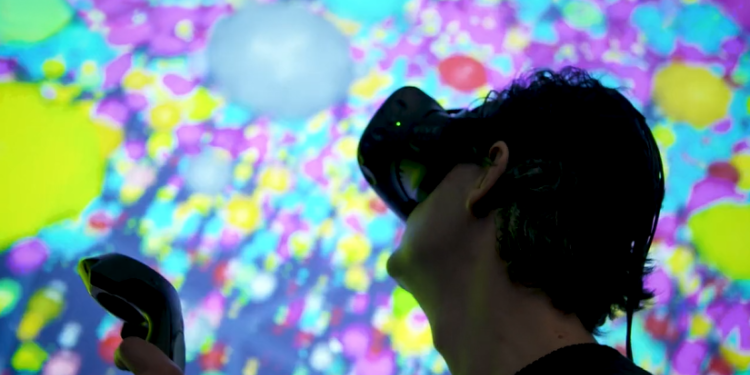
SPACE
The Spatial Profiling and Annotation Centre of Excellence (SPACE) from Cancer Grand Challenges team IMAXT.The first recipient of Cancer Grand Challenges phase two funding
In 2024, we awarded phase two funding for the first time: £5.25m from Cancer Research UK to members of team IMAXT, to establish a Spatial Profiling and Annotation Centre of Excellence (SPACE).
The funding will support the SPACE hub laboratory, hosted at the CRUK Cambridge Institute, and the SPACE analysis and computing platform, developed and operated at the Institute of Astronomy, University of Cambridge. Together SPACE includes and combines most available technologies for the spatial molecular profiling of tumours. The continued collaboration between the cancer and astronomy teams from the IMAXT project will ensure the maintenance and development of all critical aspects of the platform – from technical and scientific expertise to instrumentation, computing, and data analysis – to allow SPACE to continue to be at the forefront of the rapidly advancing spatial-omics field, and be a valuable centre of excellence to support new research in the Cancer Grand Challenge and Cancer Research UK communities.
About SPACE
Led out of the University of Cambridge by Professor Greg Hannon, Dr Nicholas Walton and Dr Dario Bressan, SPACE will open up IMAXT’s cutting-edge spatial biology platform, providing more researchers access to these tools with a view to understand the potential for the functional application of spatial biology and accelerating the pace of discovery.
"Thanks to this continued funding from Cancer Grand Challenges, the IMAXT team is now making its data generation and analysis infrastructure available to the scientific community through SPACE."
The platform
The IMAXT multi-omics profiling platform integrates multiple cutting-edge different technologies, many of which were developed by the team itself, ranging from bulk profiling and 3D whole organ imaging, to spatial proteomics and spatial transcriptomics, along with advanced data infrastructure and visualisation approaches.
The technologies available at SPACE include Serial two-photon tomography (STPT), Expansion in-situ sequencing (ExSeq), MERFISH, 3D Imaging Mass Cytometry (IMC), whole-genome single cell sequencing (DLP+), single-cell clonal barcoding (WILD-Seq), and Hyperplexed Fluorescence Imaging (HiFi) to name but a few.
Where it all began: IMAXT
In 2015, Cancer Grand Challenges set eight challenges predicated on emerging concepts and important questions across cancer research, one of which was the need for mapping tumours in 3D at the cellular and molecular level. In 2017, we funded team IMAXT to tackle it.
To achieve their ambitious goal, the team brought together experts and pioneers from fields as diverse as medicine and astronomy, virtual reality, computer sciences and statistics, and molecular biology. They developed a novel approach to produce 3D maps of the tumour micro-environment, in which each cell is identified and fingerprinted by measuring its molecular make-up. IMAXT achieved this by combining multiple technologies including 3D microscopy, single-cell genomics and transcriptomics, and spatial omics.
The data from each analysis method is integrated together, enabling researchers to interact with a comprehensive 3D model of cancer. Scientists and clinicians can immerse themselves inside a tumour, visualising the relationships between cells and conducting real-time 3D analyses with the ultimate goal of improving patient diagnosis and treatment.
This is facilitated by a groundbreaking new virtual reality viewer and analysis tool developed by the team, Project Theia, that is capable of real-time processing of single-cell spatial datasets containing millions of cells, enabling end-to-end analysis directly within the VR environment.
In 2024, IMAXT's Cancer Grand Challenges awards came to an end. SPACE is part of our commitment to democratise the technologies the team developed.

Collaborations
SPACE is open for collaborations and very excited to work with projects from the Cancer Grand Challenges community and beyond, on technology development, data generation, and data management/analysis.
These slides were presented at the 2025 Cancer Grand Challenges Summit and showcase the centre and its capabilities.
If you are interested in collaborating, please contact Dario Bressan at Dario.Bressan@cruk.cam.ac.uk
Related Content
IMAXT
Meet IMAXT, whose challenge was to find a way of mapping tumours at the molecular and cellular level.
IMAXT and Rosetta: the teams that took on the 3D tumour mapping challenge
Learn about how IMAXT and Rosetta have been at the forefront of the spatial biology revolution.



